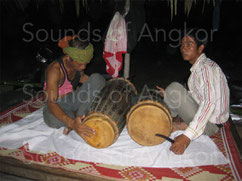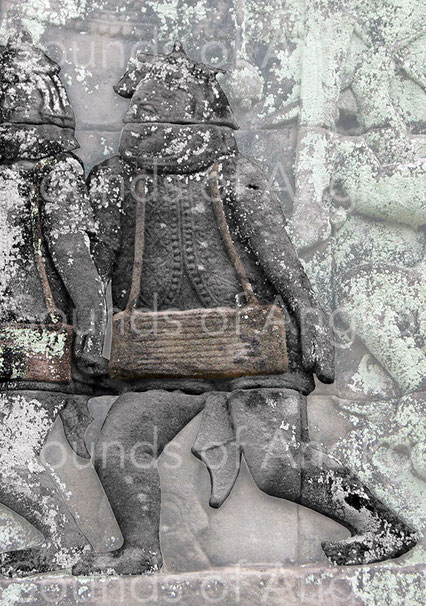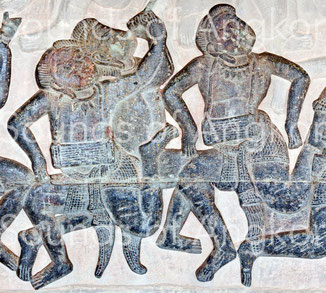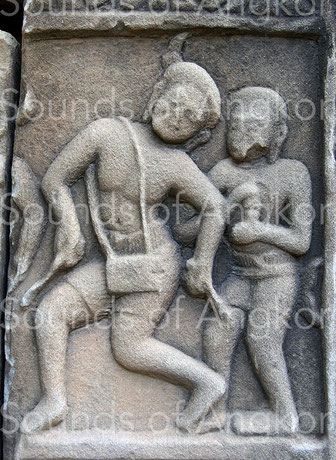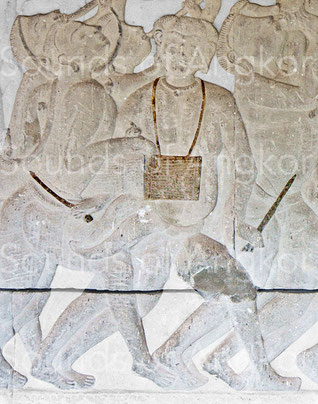In Angkorian iconography, cylindrical drums are distinguished both by their size (long or short) and by their technique of play: those struck with bare hands, those struck with chopsticks, and those using both techniques.
Cylindrical drum hit with bare hands
The bas-reliefs of the Bayon represent in large numbers both Khmer and Cham. The latter strike with their bare hands long cylindrical drums whose device of alternating tension of the membranes in the image to that of the barrel drums. Some make clear a carrying strap passing around the neck, others nothing. Long cylindrical (more or less conical) drums, with some variations, is always used by the Khmer and Cham from Vietnam and Cambodia. The Cham of contemporary Cambodia play with both a bare hand and a stick.
Cylindrical drum beaten with sticks
Drums struck with two sticks appear for the first time in the iconography of the 11th century in the Baphuon. They are carried across one's shoulder, around the neck or at the waist. They comprise two membranes laced by a link passing alternately by each of them. Two different forms appear: some are long, rectangular representation, others shorter, profile almost square.



